Don’t waste money on an extractor that doesn’t remove heat and smells effectively. Read our expert advice on getting a breath of fresh air in your kitchen.
Extractors have made the transition from utilitarian appliances to stylish focal points. But before you get carried away with looks, take time to consider the practicalities: will the extractor you’ve set your heart on work in your space or is there a better solution? After all, a well-equipped kitchen is as important as a stylish one when it comes to adding value to your home.
With so many extractor styles now on the market, it can be difficult to work out how they differ and which ones will work in your kitchen. In this guide, we compare the most common types of extractor available and answer some essential questions.
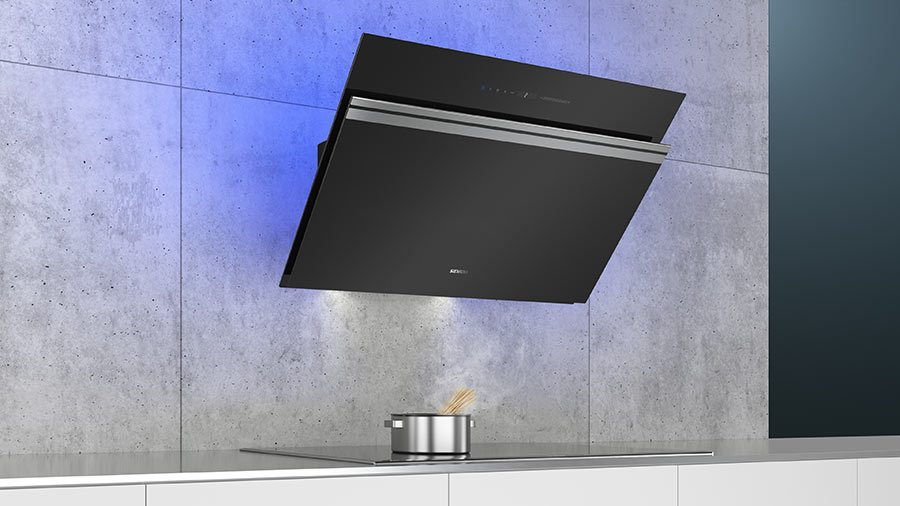
Key features of the Siemens iQ700 inclined hood include the climateControl sensor, which monitors steam and odours, and adjusts the power level automatically. The recommended retail price is £1,049.
What is a ducted-out extractor hood?
Decision number one should be whether you want a ducted or a recirculation extractor, as this will determine where you can locate it. Ducted extractors need access to an external wall so that air can be removed from the building via a pipe (or duct) to the outside.
For most ducted hoods, the maximum recommended length of ducting is around 5 metres, though you’ll need to reduce this by 1.2 metres for every right angle bend you have. As a general rule, the shorter the duct run and the fewer the bends, the better your hood will perform.
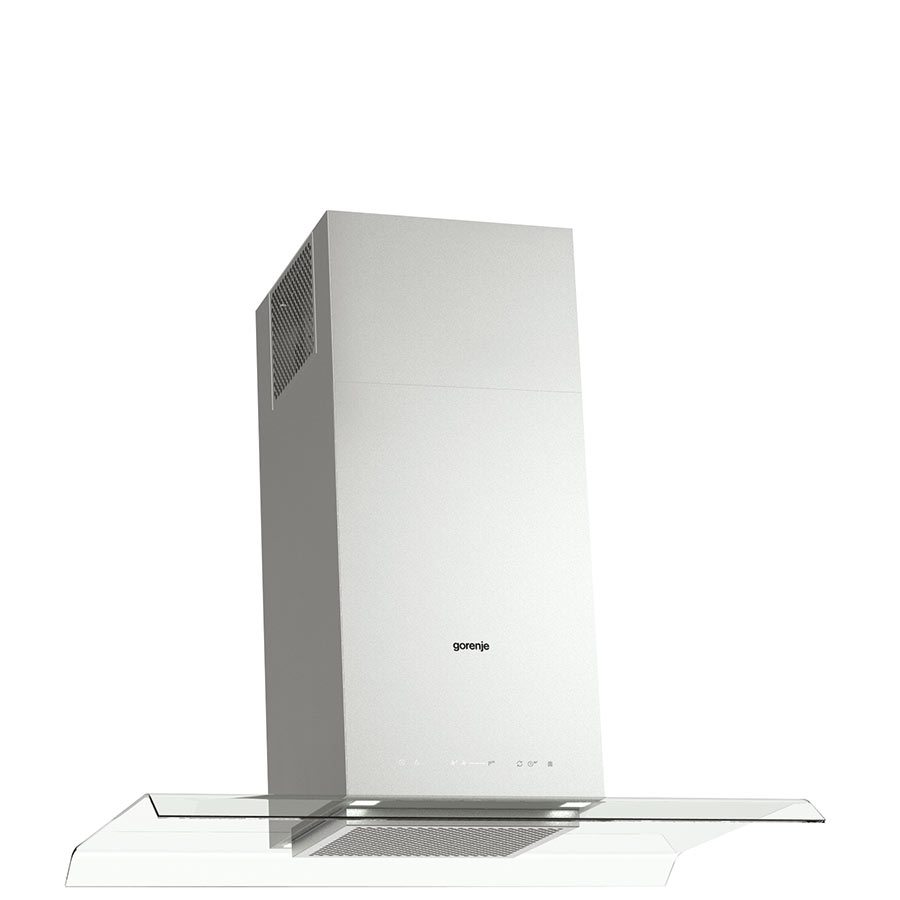
The Gorenje IHGC963A1XUK island cooker hood runs at 60dB and has a maximum extraction rate of 441m3/h. Rated B for energy efficiency, it’s priced around £799.
What is a recirculation extractor hood?
Not all kitchens are suitable for ducted extraction – for example, the hob may be too far from an outside wall. You can opt for a recirculation model instead: this will pass the air through filters to neutralise odours before returning it to the kitchen.
Though less effective than a ducted model, the fact that a recirculation extractor doesn’t have to be connected to an external wall means that it can be installed almost anywhere in the kitchen.
Many hood styles can be configured to either recirculation or ducted extraction. Talk to your kitchen fitter about how your top choices could work within your proposed design.
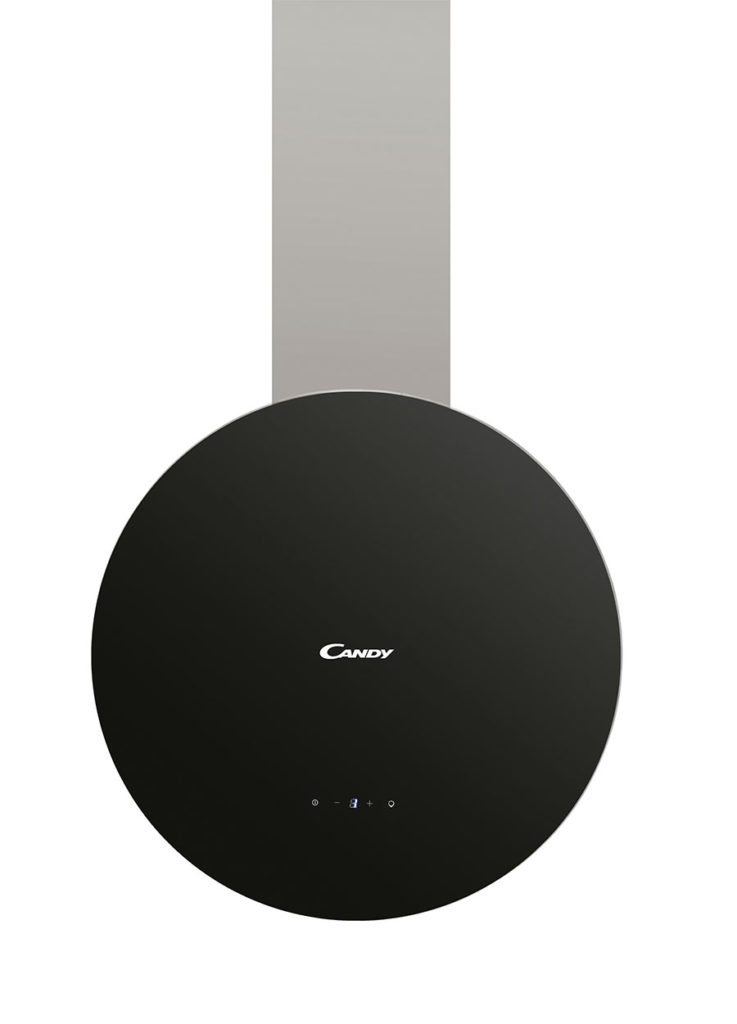
As with all Candy extractors, this 60cm wall-mounted cooker hood comes in both extraction and recirculation modes. With a maximum noise level of 72dB and a maximum extraction capacity of 730m³/hour, it’s priced around £229.
How can I calculate the extraction rate my kitchen needs?
Your extractor will purify the air in the whole room, not just near the cooker, so you’ll need to factor in the size of your space before you make a purchase. This is particularly important if you have a large open-plan room.
The extractor should be able to change the air roughly 10 times per hour, so work out the volume (in m3) of the room (length x width x height). Then multiply this by 10 to work out the minimum extraction rate you need. For example, if you have a kitchen of 25m3, you’d need an extraction rate of about 250m3/hr.
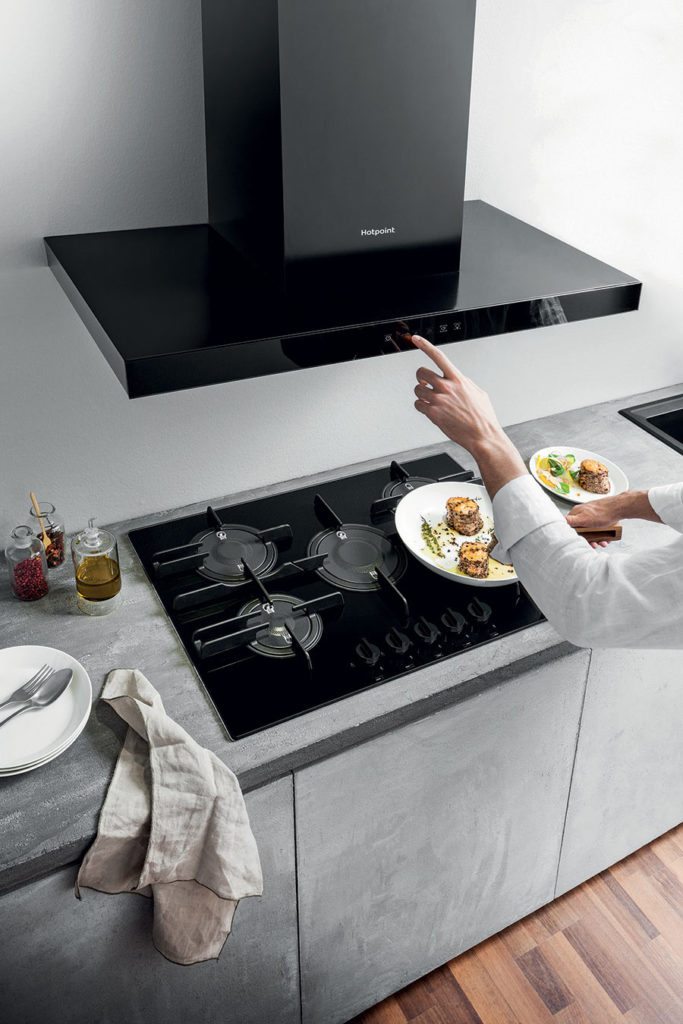
The Hotpoint box chimney features 360ᵒ odour removal technology that purifies 98.9 per cent of odours in the air in six minutes. It’s available for around £849.99.
How wide should my extractor hood be?
Cooking vapours spread differently depending on the hob style. With induction hobs, they travel sideways as well as up, so you’ll need a hood that’s wider than your hob. For example, if you have a 60cm induction hob, choose a 90cm extractor.
With gas, the steam has a candle effect that rises out then up. That means you can choose an extractor that’s the same width as your hob.
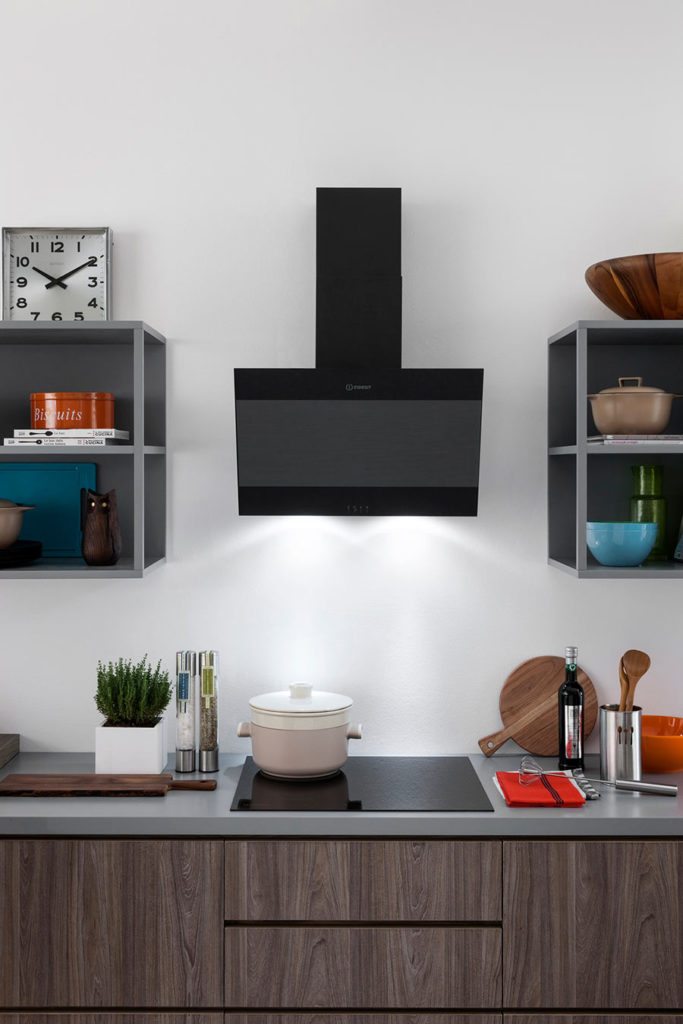
The Indesit Aria angled cooker hood is energy rated B and has an extraction rage of 658m3/hr and a maximum noise level of 70dB. It’s finished in black and priced round £199.99.
What are the benefits of a ceiling extractor?
A ceiling extractor is installed flush to the ceiling above the hob. It’s ideal above an island as it won’t disrupt sightlines across the room. However, you’ll need space in the ceiling void above the hob for the unit, motor and ducting.
“You can dispense with ducting and choose a recirculatory model, but nevertheless you need around 200–400mm depth in the ceiling void for the ceiling extractor unit itself, depending on the model,” says Jeanette Ward at Franke.
If you live in an apartment and can’t alter the height of your ceiling, this option won’t be for you. But even if you can adjust your ceiling height, you’ll need to think about noise insulation, as the motor can be noisy and may be amplified by the space in your ceiling.
Ceiling extractors are also not ideal for rooms with very high ceilings – say, period properties – because they’re too far away from the cooking source. “If the extractor is too high then you may be moving the air around, but not necessarily removing the odours and condensation. The recommended optimum distance will be in the manufacturer’s instructions,” advises Jeanette.
“One way to get round these two scenarios is to construct a box as a decorative feature and site the extractor unit in it,” Jeanette continues. “Similarly, you could make a decorative detail of the ducting by using a wide-diameter steel pipe or box that in too, but these are matters of personal taste. And for some, that might negate the minimalist look that this product is designed to create.”
Plan the layout of the ducting to make sure your extractor works as hard as it can. Jeanette advises avoiding kinks and bends, as these will reduce efficiency.
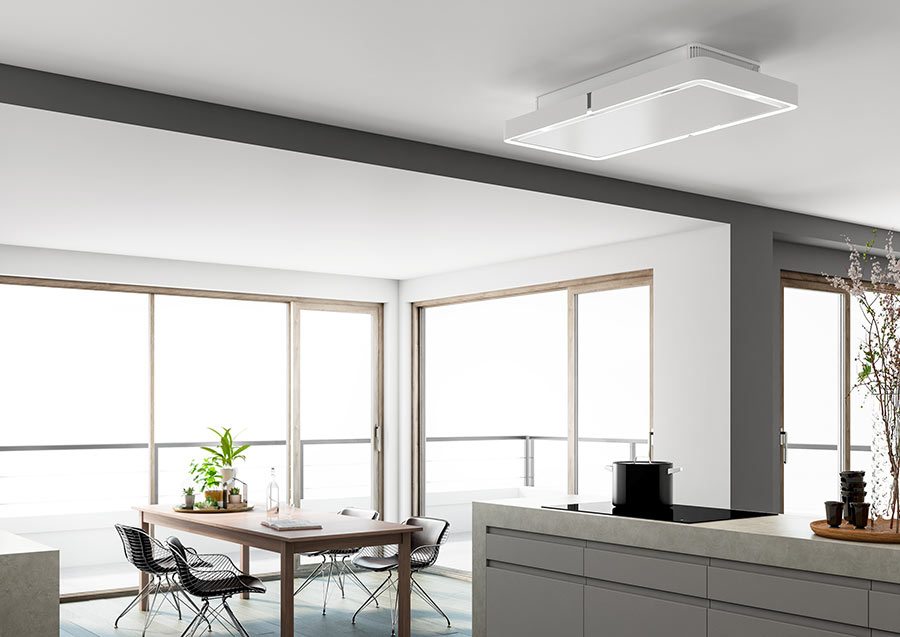
The Novy CLOUD is a 110cm ceiling hood specifically designed to work in recirculation mode, making it easy to install. It has an extraction level of up to 608m³/h and noise levels ranging from 36dB to 53dB. Priced around £3,000.
What do I need to know about installing a downdraft extractor?
Downdraft extractors sit at the back or to the side of the hob, rising when in use and dropping out of sight when not required. Sitting almost flush to the worktop, downdrafts create a streamlined aesthetic and dispense with a bulky extractor in your sight lines.
If you can install a downdraft extractor against a wall, you can drop ducting down under the cabinetry and straight to the outside wall, making the installation less complicated. If, however, you want to install it on an island, you’ll need to plan a route for the ducting at the start of the installation process.
“A ducted downdraft extractor can’t be retrofitted into a kitchen island unless you’re prepared to dig up the floor and create a ducting channel,” says Jeanette. “They’re also quite space hungry and will take up the majority of the kitchen cabinet underneath the hob area to house the motor. For this reason, it’s not an option to have an oven underneath.”
There are a few other considerations to bear in mind at the planning stage. “With this type of hood, your choice of hob can be key, as research has found that pots and pans placed on the front rings of a traditional-style hob are not as successfully vented as those on the back,” says Max McCormick of Miele.
“For this reason, a panoramic hob is the best design if you opt for a downdraft hood. This type of hob is narrower, offering four zones almost in a line to ensure cooking fumes and steam are taken away.”
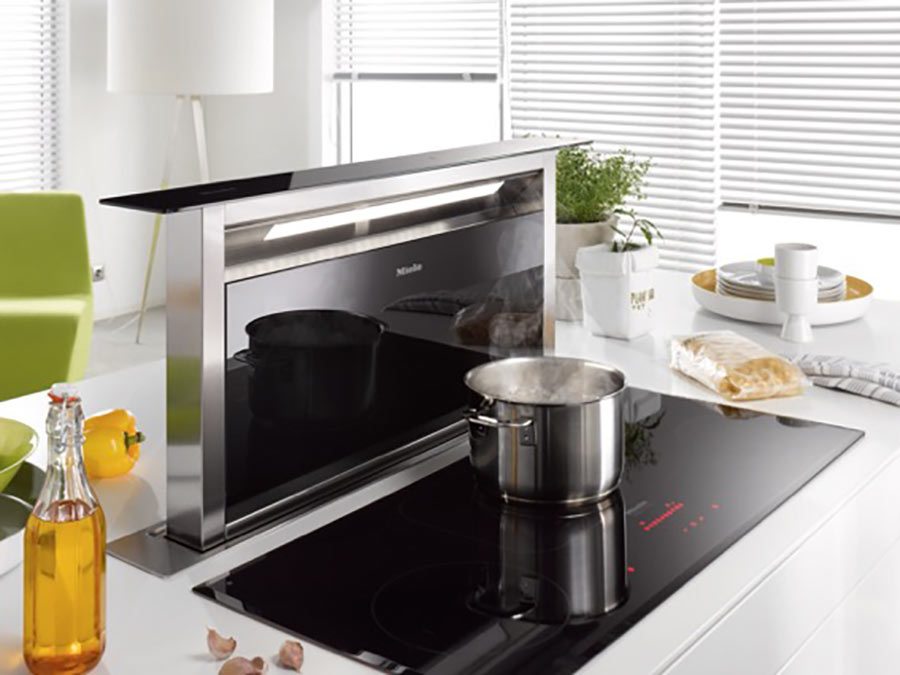
Miele’s 90cm DA6890 Levantar cooker hood (priced around £2,349) rises 40cm from the worktop and can reach an extraction rate of up to 725m3/hr.
What information can I expect to find on an energy-rating label?
You’ll find an overall energy rating for the extractor (with label A being most energy efficient) as well as more specific details about how much energy (in kilowatts per hour) it uses per year.
There’s also a rating that shows the efficiency with which the extractor can remove cooking vapours, as well as ratings for the lighting and the grease efficiency class (how much grease is retained within the filters). Plus, you’ll see information about noise in decibels (dB) – essential if your kitchen is part of a larger open-plan space with multiple functions.
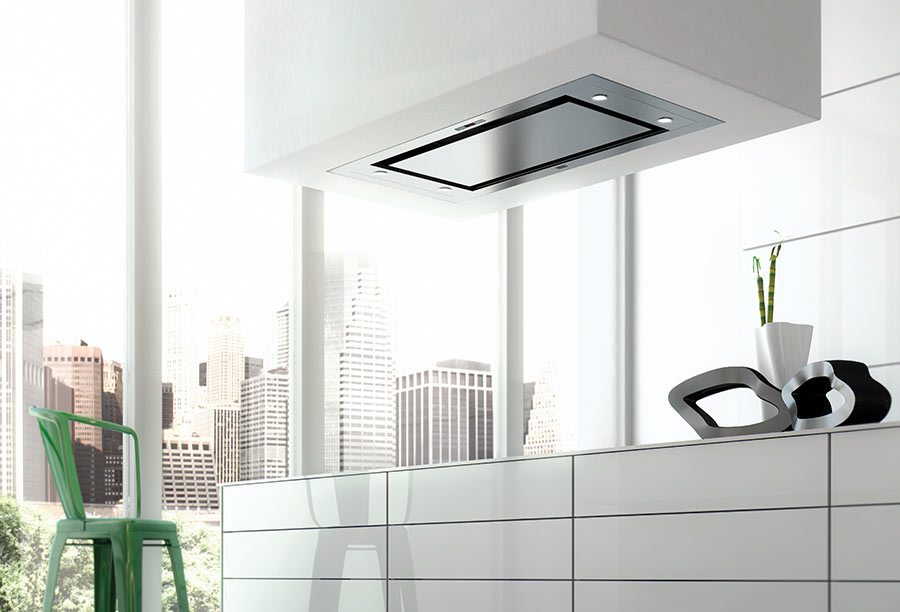
The Franke Galaxy FGA 1000 FX EU16 ceiling extractor is 1000mm wide and offers four extraction speed settings that can be operated by remote control. Priced around £1,688, it extracts between 170 and 690 m3/h depending on the setting.
What decibel level should I look for?
Noise levels are particularly important if you cook, eat and entertain in an open-plan kitchen-dining-living space. After all, no-one wants to shout over the noise of an extractor fan.
Most cooker hoods will have a noise level of around 70dB – so if you want one with a low noise level, pick a model which is less than 60dB.
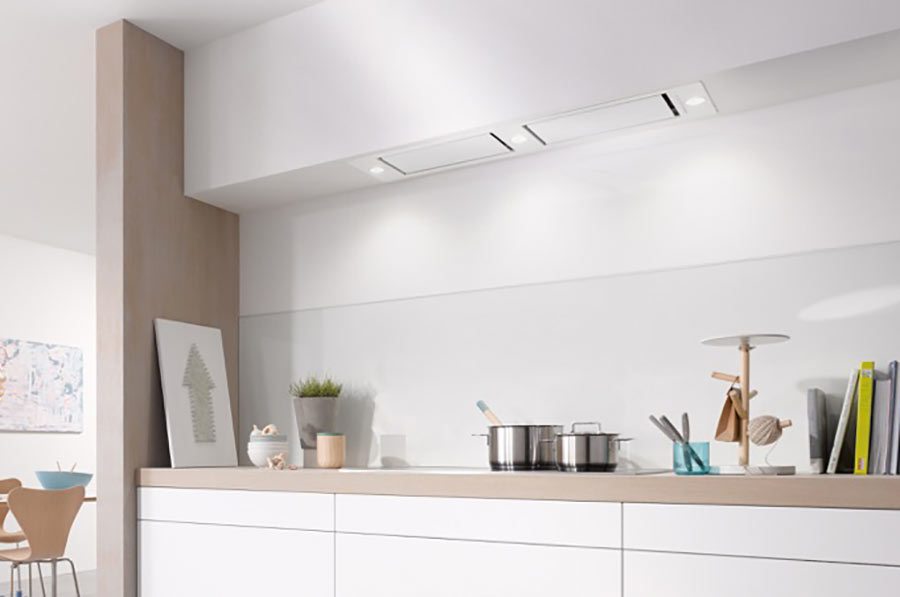
The Miele DA2620 cooker hood, from £2,399, is designed to be unobtrusive: only the extraction surface and controls are visible. A-rated for energy, it can also be used a ceiling extractor.